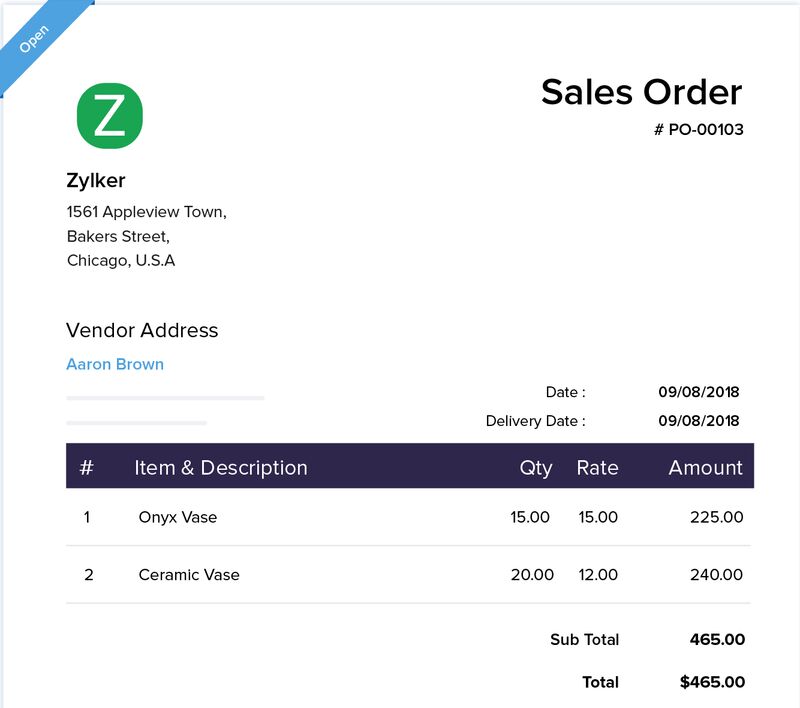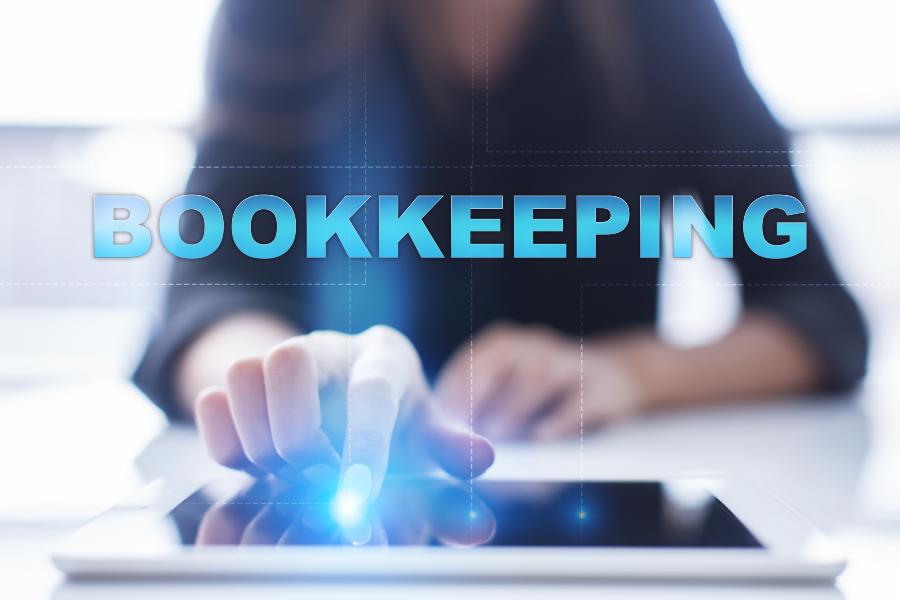A sales order (SO) is a document that confirms the customer’s order and starts the order fulfillment process. When an order is placed, the business must check if it has enough inventory to fulfill it or adequate workforce and supplies to perform the service. If it can accommodate the order, the person in charge should make an SO and send one copy to the customer as order confirmation and retain another copy as an internal document to initiate the order process.
What Is the Purpose of a Sales Order?
SOs aid your employees in fulfilling the customer’s order. It’s a vital document in the order management process because it should state exactly what the customer wants.
If your business doesn’t have segregated departments, you may not need to create SOs to keep everything organized. You can instead keep track of orders using accounting software like QuickBooks Online or a dedicated order management system.
Order fulfillment cycle
Initiator of the Order Process
An SO triggers the start of the order process. It’s the originating document that serves as a basis for all succeeding sales documents and important accounting entries. If you want to review transactions, the SO will be the first document you’ll check.
Basis for Extending Credit to Customers
When a customer requests a sale on credit, the sales personnel prepares an SO and sends it to the credit department for credit approval. The credit department personnel will evaluate whether the customer is qualified for a credit term.
If this is a repeat customer, the personnel will review the customer’s payment history and patterns to determine the best credit term to grant. If you want to learn more about granting credit, you can read our article about extending credit to customers.
Basis for Updating Inventory Records
The quantity of inventory indicated in the SO can be used as a basis for updating inventory records. The inventory quantity should reduce the book balance of the inventory account or subsidiary records, if any. The SO also helps the shipping department account for goods shipped to customers.
Basis for Invoicing
Once the goods have been packed and prepared for shipping, the approved SO and bill of lading should be forwarded to the A/R clerk. If you provide goods and services outright, such as point-of-sale (POS) systems, and receive payment immediately, there’s no need to prepare shipping documents and an invoice. You may directly issue an official receipt.
For large transactions, the A/R clerk will review the approved SO and bill of lading to ensure that the amount stated in the SO complies with approved selling prices and that the goods shipped pertain to the items stated in the SO. If the A/R clerk finds no discrepancy in the documents, the clerk will prepare the sales invoice that will be sent to the customer along with the bill of lading.
Information to Include in a Sales Order
As an essential document in the order management process, an SO must contain all relevant information that will help you and your employees fulfill the order. Below is the required information:
- Company details: Identify seller and buyer involved in the transaction.
- Customer’s name or registered business name: Specify who is receiving the order.
- Shipping or billing address: Indicate where the order and invoice should be sent.
- Itemized list of services or products purchased: Detail what exactly is being sold.
- Selling prices before taxes: List the base price of each item before any taxes are applied.
- Applicable sales taxes, delivery charges, and freight insurance: Outline any additional costs on top of the base price.
- Total amount due, including selling price before taxes plus taxes, delivery charges, and insurance: Specify the final amount the customer owes.
- Credit term: Definite the timeframe for payment after the sale.
- Shipping term: free on board (FOB) shipping point or destination: Clarify who is responsible for transportation costs and at what point.
- Customer deposits or down payments: Indicate any upfront payment received from the customer.
- Applicable terms and conditions: Reference any governing rules for the sale.
- Current balance: If applicable, show the remaining amount owed after any deposits.
- Payment terms or mode of payment: Specify how and when the customer must pay.
Example Sales Order
An approved SO is what will be the basis of succeeding documents like packing slips, bills of lading, and sales invoices. Below is an example:

Example Sales Order
The key element of an SO is the order number. In your accounting records, the SO number will serve as the reference number that will be mentioned in succeeding documents and records.
Other important elements are the quantity, part number, description, and price. These elements will help you and your employees fulfill the order by packing the correct inventory part number in the right quantity.
Benefits of Sales Orders
SOs offer several advantages for businesses, both large and small. Here are some of their key benefits:
- Improved efficiency and accuracy: SOs help automate data entry and approval processes, reducing the risk of errors caused by manual work. This saves time and frees up staff to focus on other tasks.
- Enhanced inventory management: SOs provide a clear picture of what products have been ordered and need to be shipped. This allows businesses to track inventory levels more effectively and avoid stockouts.
- Better customer service: With precise SO information, businesses can provide customers with faster order processing, improved communication, and accurate order tracking.
- Streamlined workflow: SOs can be integrated with other order systems, such as accounting and inventory management software, creating a smoother workflow.
- Informed decision-making: SO data can be used to generate valuable sales reports that can help businesses identify trends, make better pricing decisions, and optimize their sales strategies.
Sales Order vs Quotes
A quote or estimate is given to customers who are interested in buying your goods or services. At this point, you and the customer are still negotiating the price, scope of the service, or quantity and quality of the goods. An estimate is merely an offer and not a sales contract. Once you and the customer agree on the quote, then an SO can be issued as confirmation of your newly formed contract.
Sales Order vs Purchase Order
A purchase order (PO) is a document that authorizes the purchasing department to purchase inventory for sale or supplies for office use. It isn’t part of the sales process, but rather a component of the purchase process. When you make a PO, you’re the one who’s buying goods whereas, in an SO, you’re the one who’s selling goods.
Frequently Asked Questions (FAQs)
A sales order is a formal document created by a seller that confirms the details of a sale with a customer. It’s essentially a green light to proceed with fulfilling the order.
Unlike an invoice, an SO isn’t a request for payment from your customer. It’s merely confirmation that the order has been accepted and is being processed. Once the order is processed and shipped, or the service provided, the customer will be issued an invoice requesting payment. At this point, the customer owes the business according to the payment terms of the invoice.
A purchase order and sales order serve different purposes in a sale and come from opposite sides of the transaction. A purchase order is issued by the buyer and sent to the supplier, and it signifies the buyer’s intent to purchase specific goods or services. A sales order, on the other hand, is created by the seller after receiving the PO, and it serves as a confirmation that they can fulfill the buyer’s order.
Sales orders help ensure clear communication between buyers and sellers. They improve order accuracy and efficiency for the seller by aiding in inventory management, order fulfillment, and sales pipeline tracking.
Bottom Line
An SO is a document that can help your business efficiently process orders. Creating SOs can help you keep track of your orders and ensure that customer orders are fulfilled based on their specifications. However, it’s not a requirement for small businesses or solopreneurs. While an SO can be sent to a customer to confirm an order, it isn’t a payment request. You must send your customer an invoice to request payment.



